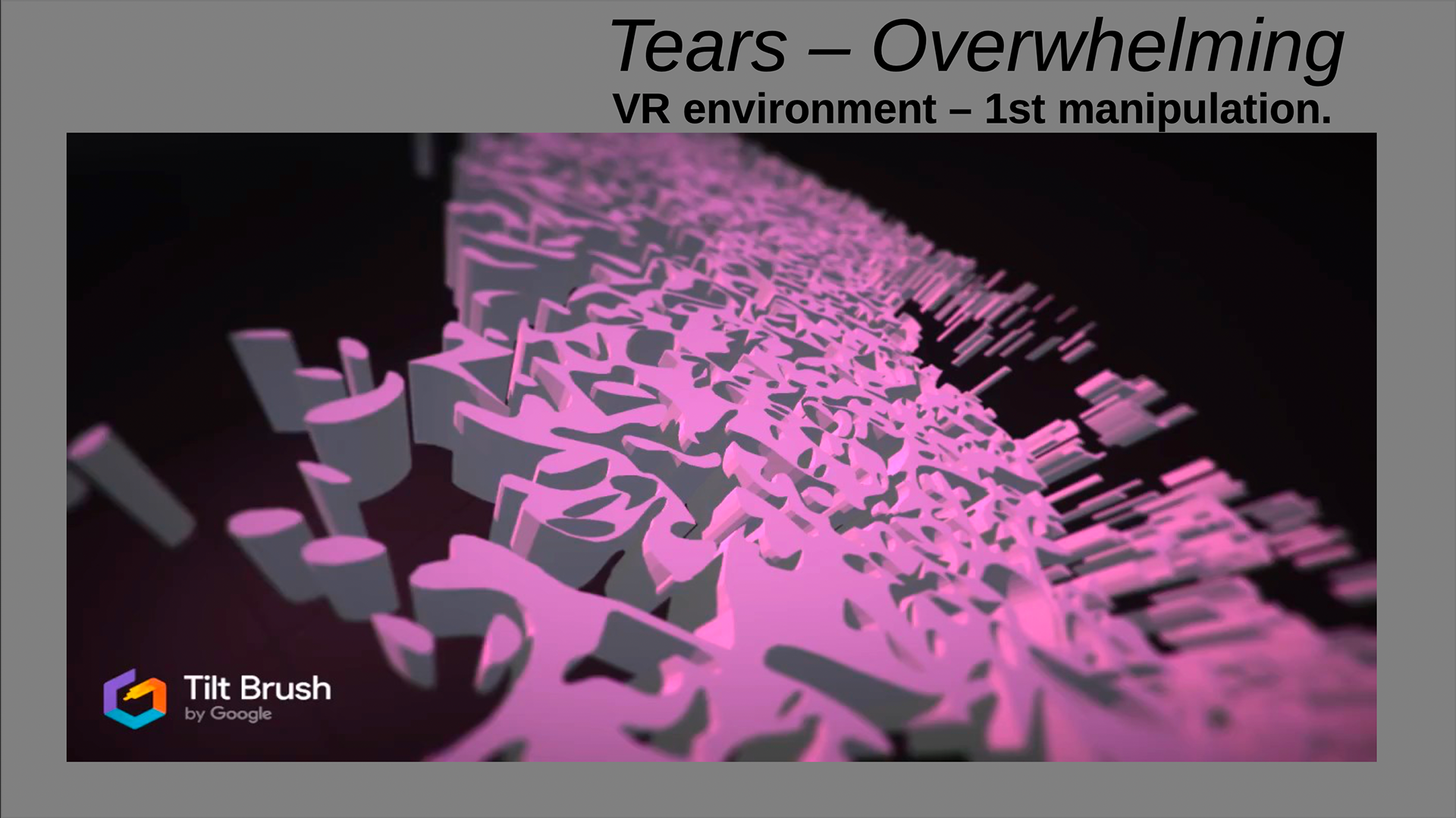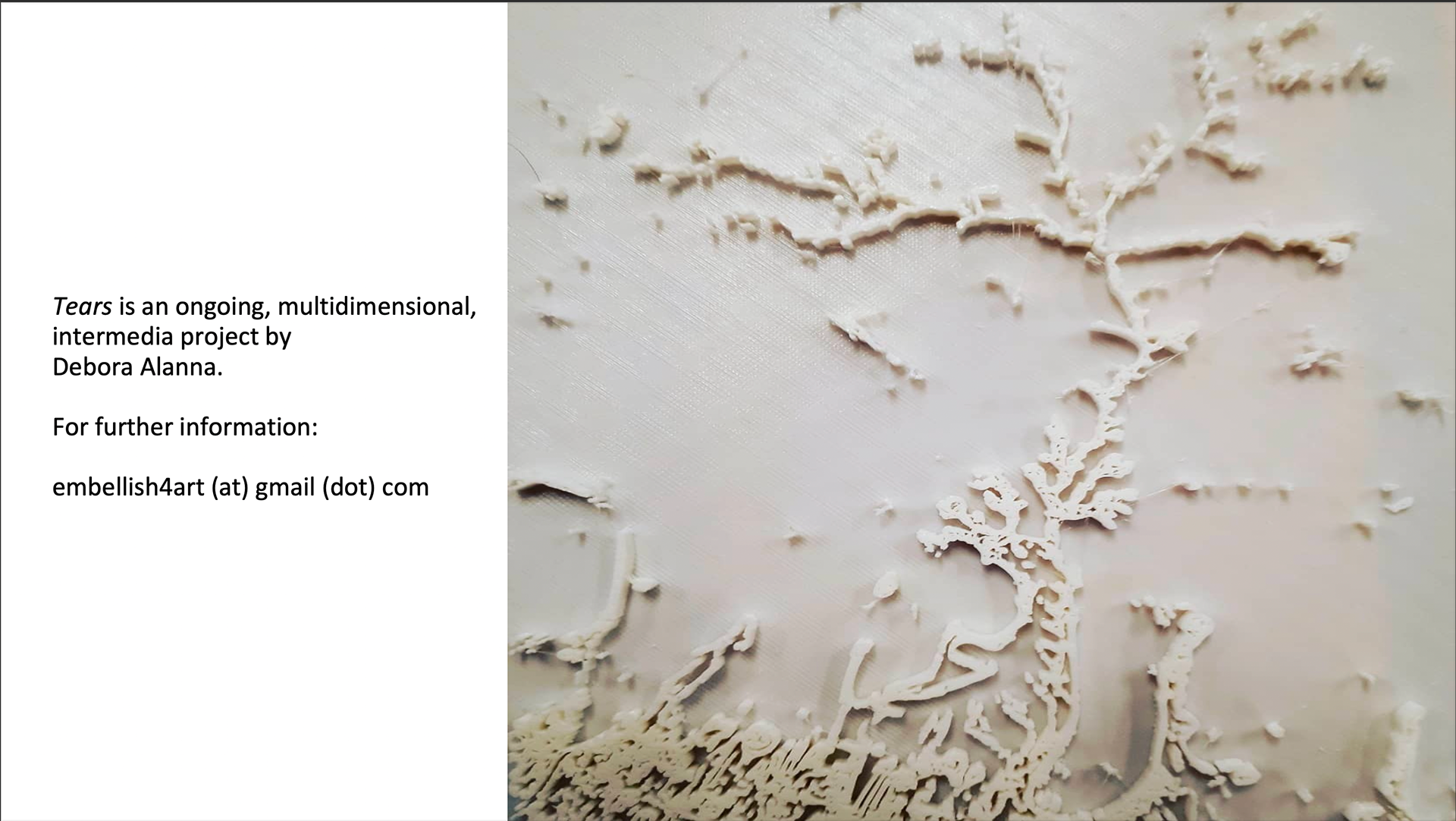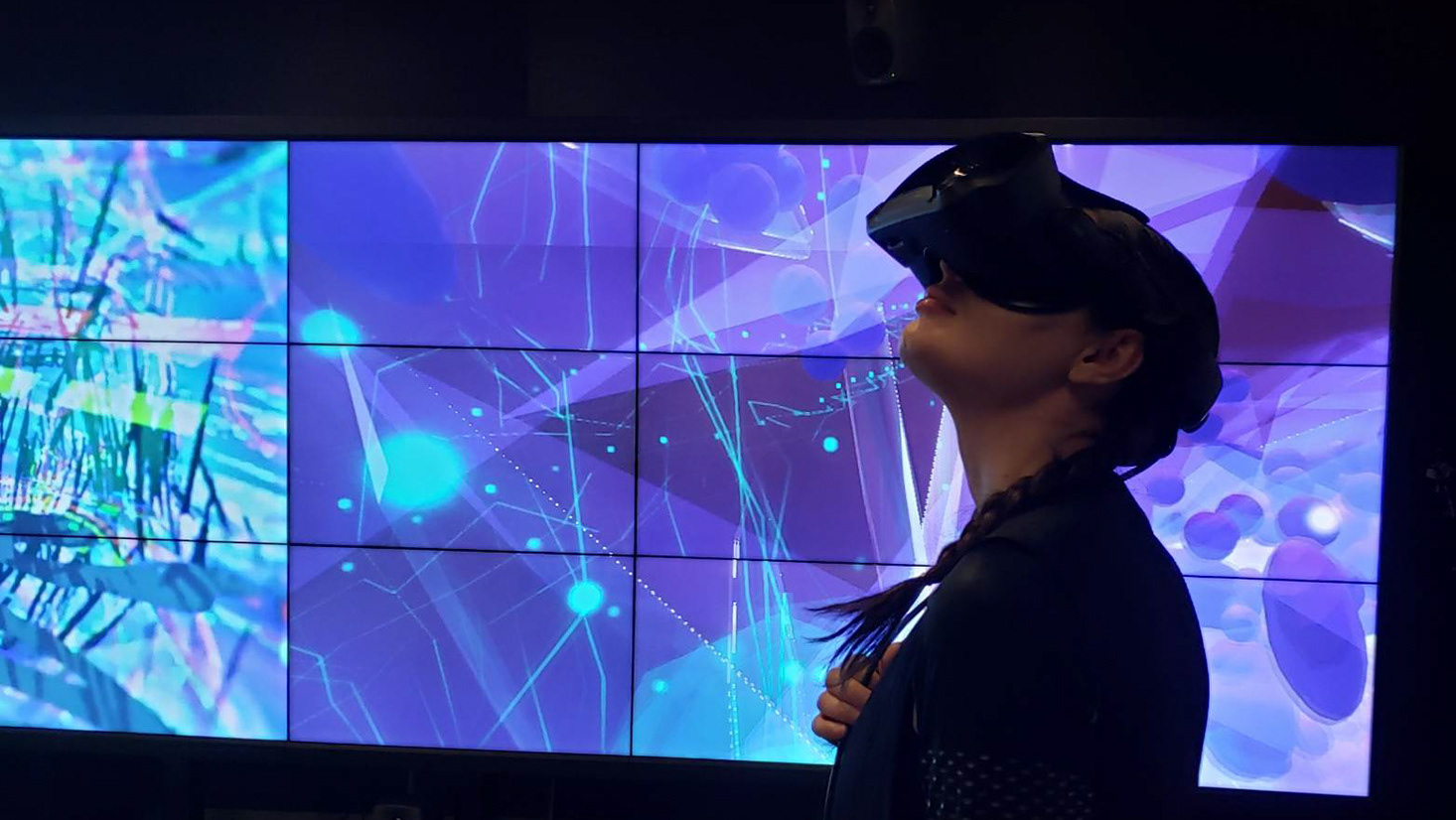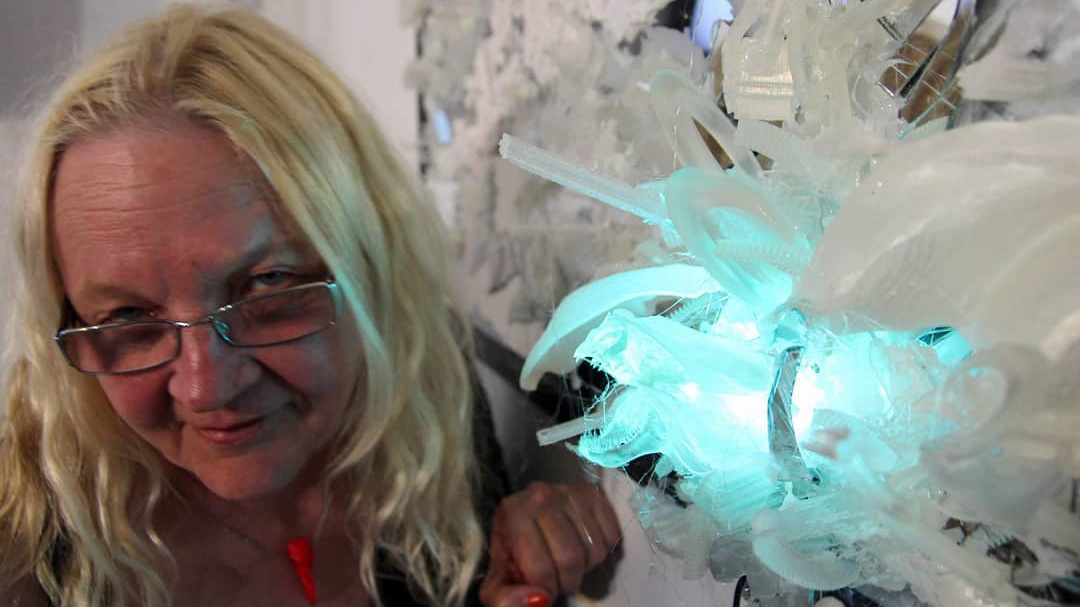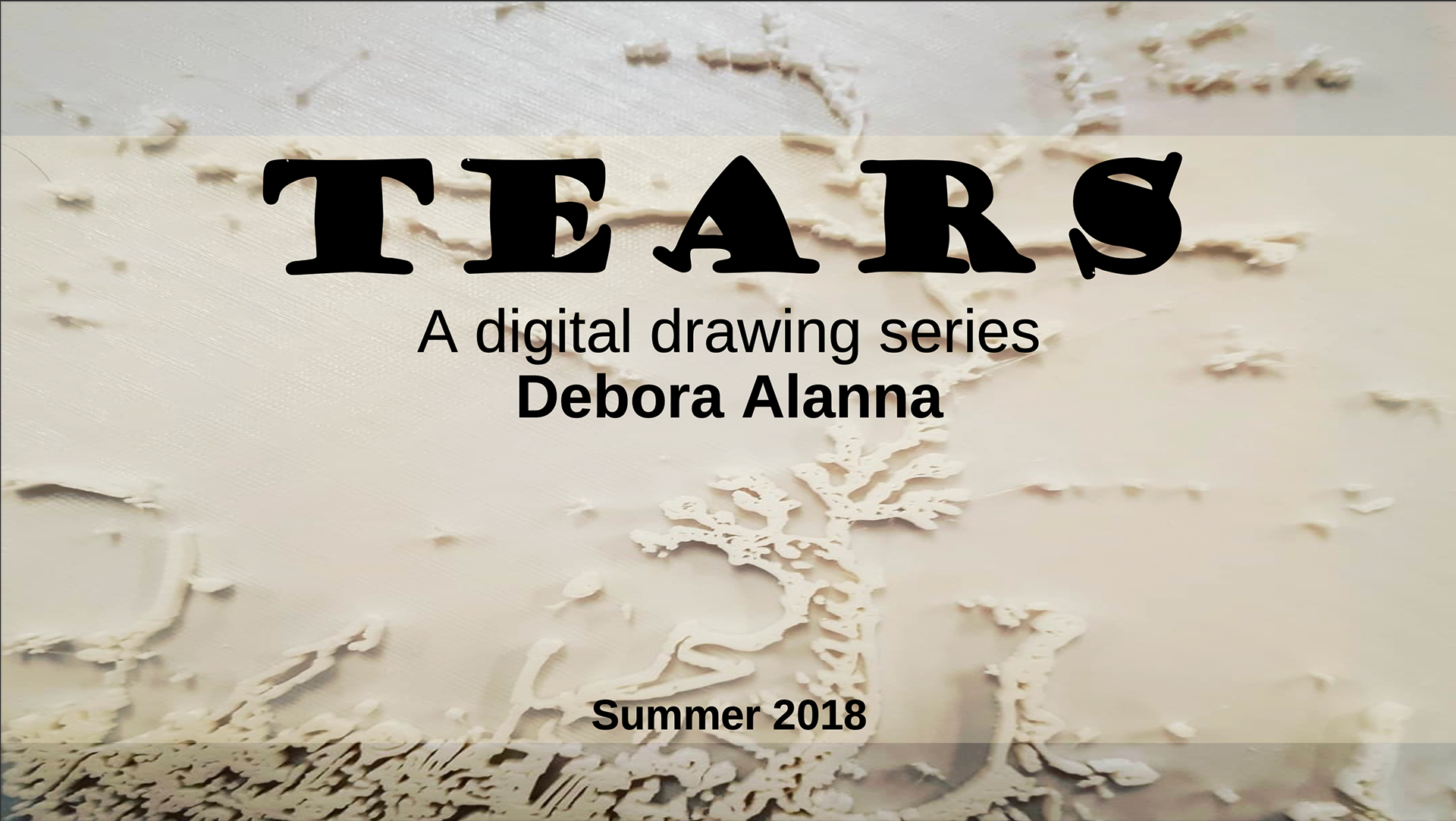
"Drawing on the seemingly invisible provides a basis for poetic living.
The macrocosmic from the microscopic seemed a worthy means of exploration and development.
Digital drawing seemed a viable way to challenge presumption about commonality, allow refreshed views, opportunities to engage in dialogue and expand the human experience of tears."
-Debora Alanna
Microscopic images of human tears were obtain from the internet.
Images were manipulated in 3 different software to realize them as 3D prints.
Tears as poly-objects were imported into virtual reality (VR) to create a VR environment for collaborative purposes. (left)
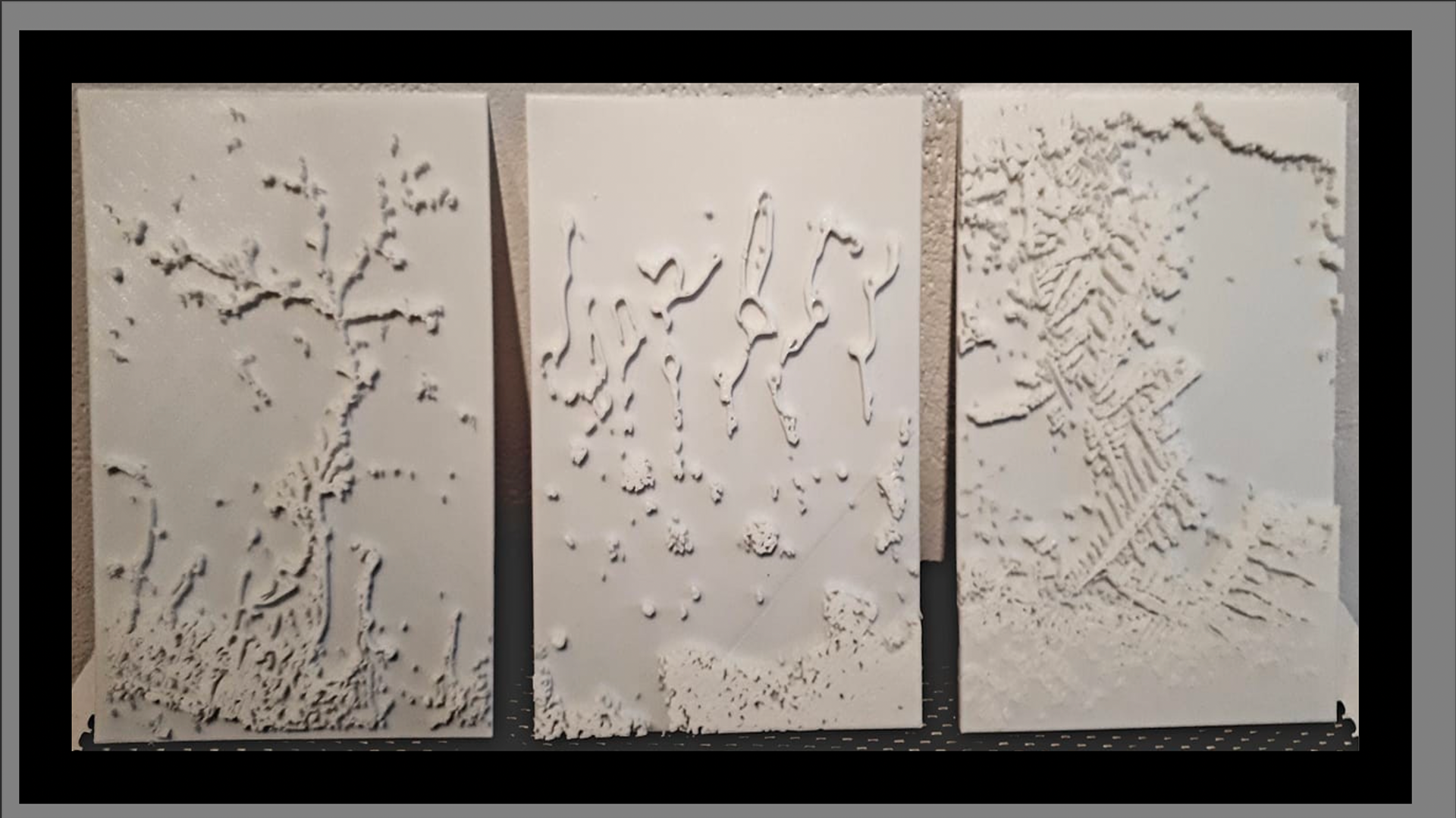
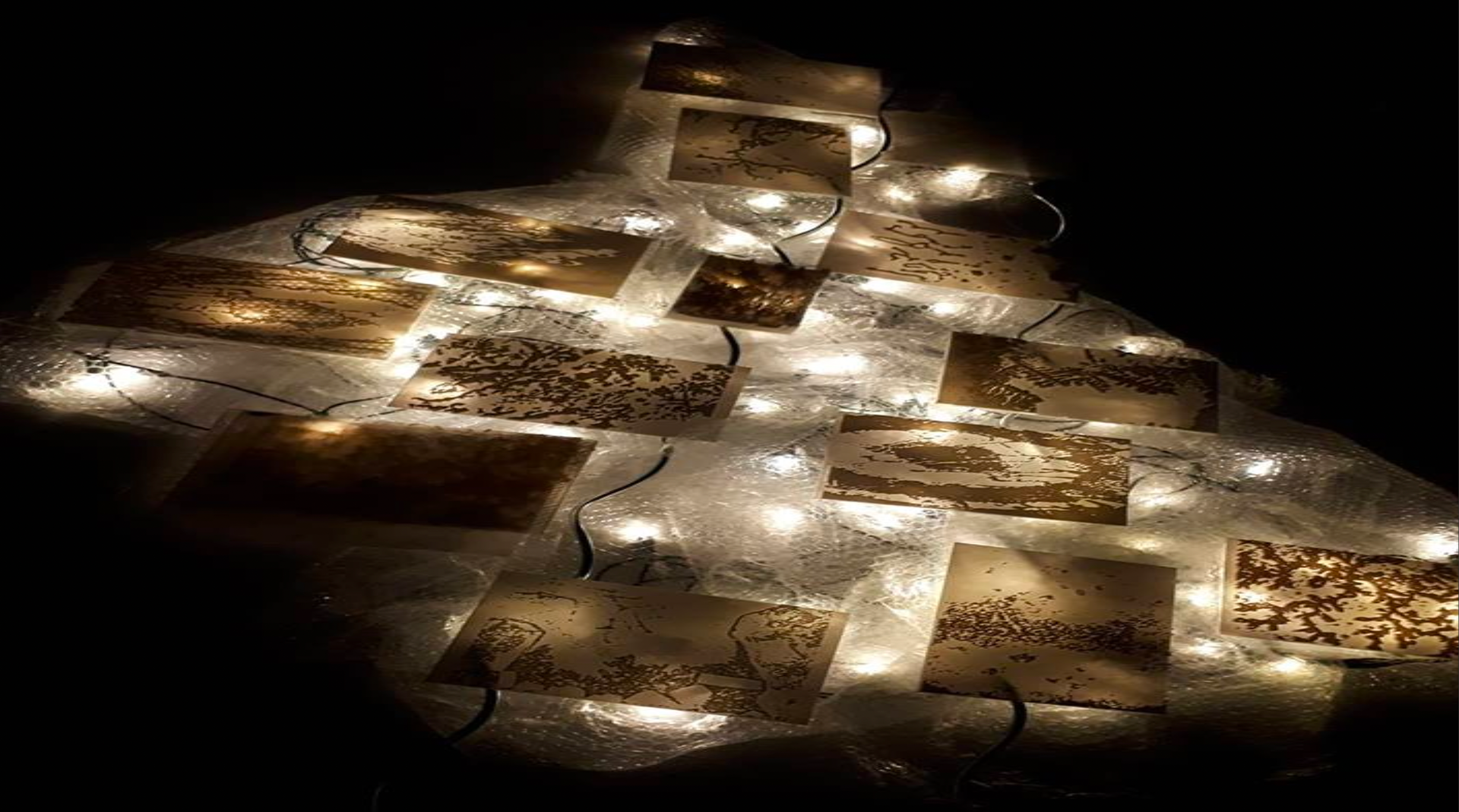
Research and Process:
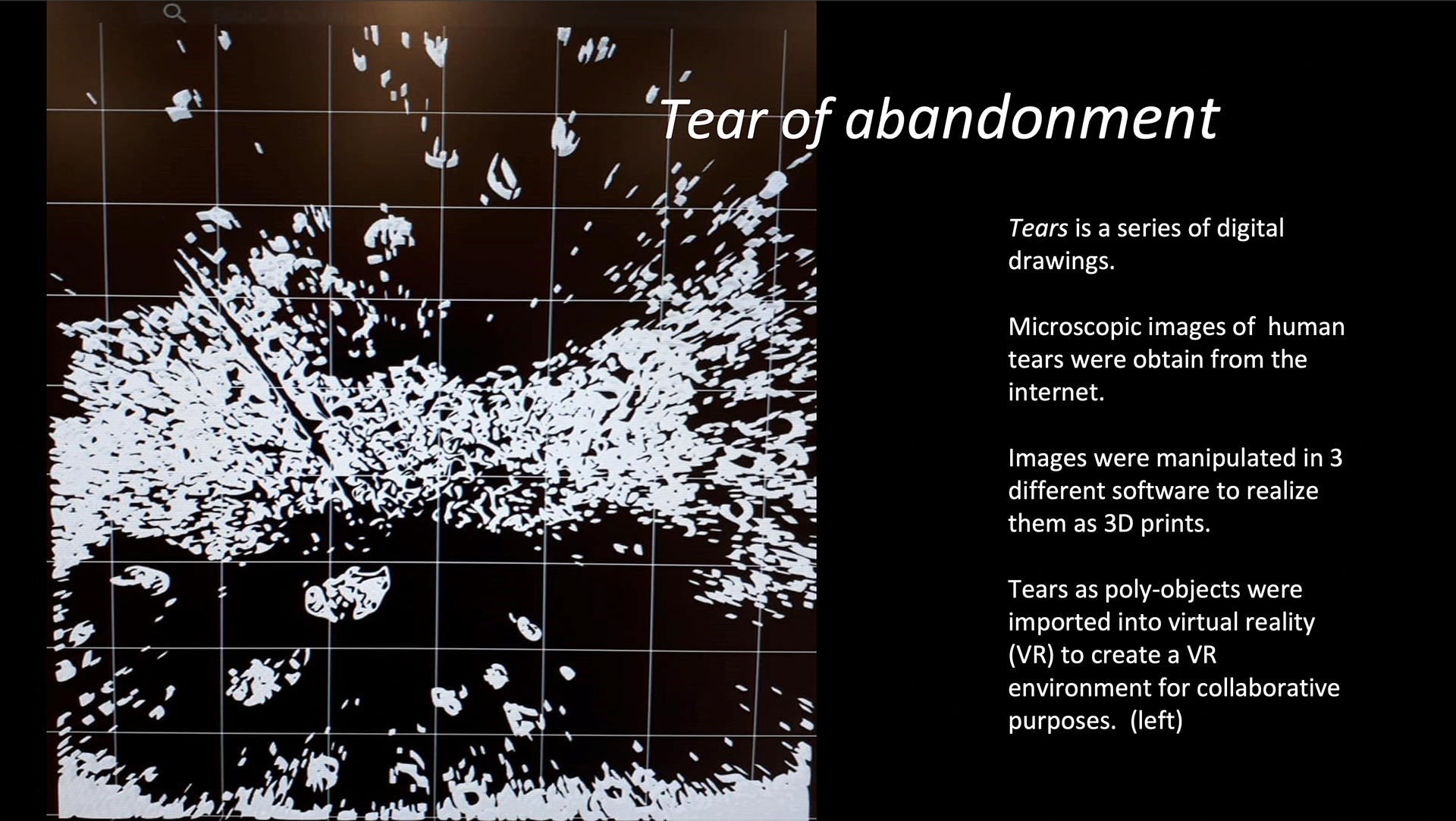
When people cry, tears change biological constructs seen with microscopic imagery.
Microscopic Images available from the Smithsonian site were used for this as initial image resources for this project.
Many of the microscopic images originated from the eyes of scientist Rose-Lynn Fischer.
She photographed hers and other’s tears.
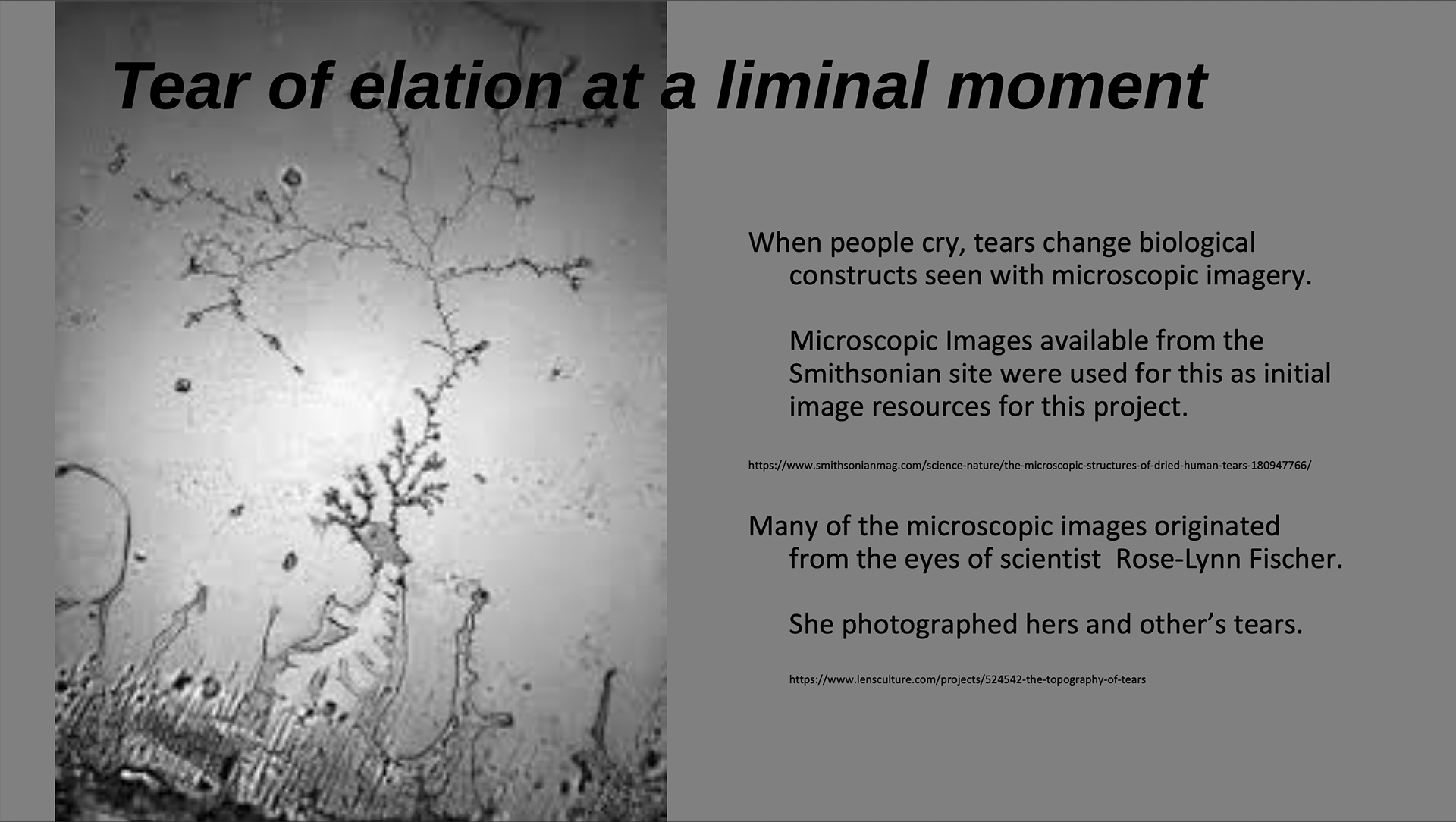
The microscopic image was imported into the InkscapeTM program to create a 3D file with vectors. Vectors are a means of plotting 3-dimensional space.
This file was adjusted to thicken lines and adjust surfaces, give the drawing materiality and develop composition.
The tear from being overwhelmed was brought into TinkercadTM to extrude the shapes – give them height and depth (left), produce a base (red box) that would be digitally merged as one unit.
Later, before the VR import, the work was disassembled to remove the base.
Variations to the structure of the image can take place in TinkercadTM. Changes to the height and width of the drawing were experiments in image manipulation.
The red square is the base before it gets adhered to the rest of the image surface and is set below the structure.
Adobe NetfabbTM software was used to repair files prior to bringing the work into the 3D print program.
3D or digital prints are called stereolithographs, and files must be saved with that extension before printing (STL).
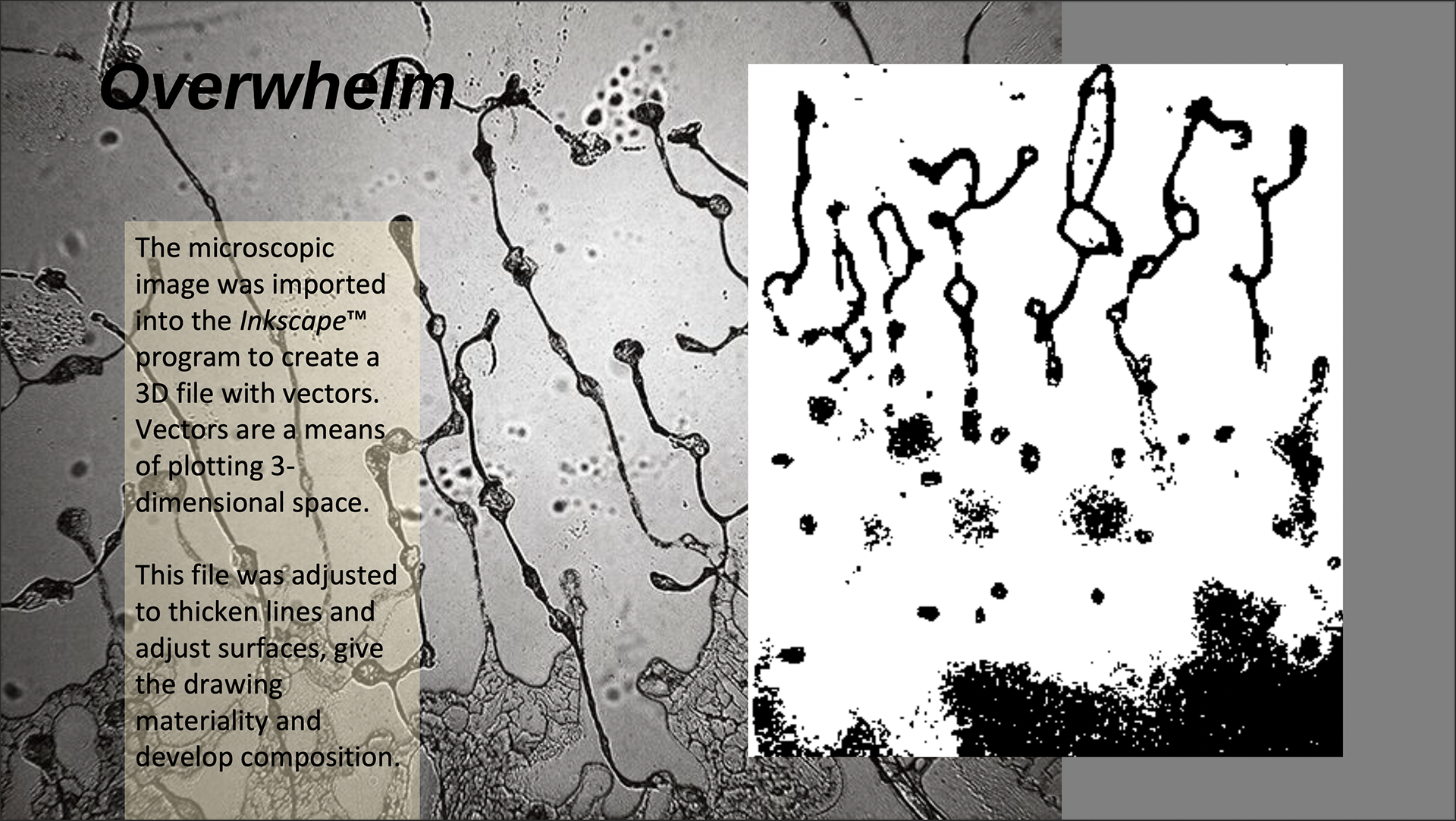
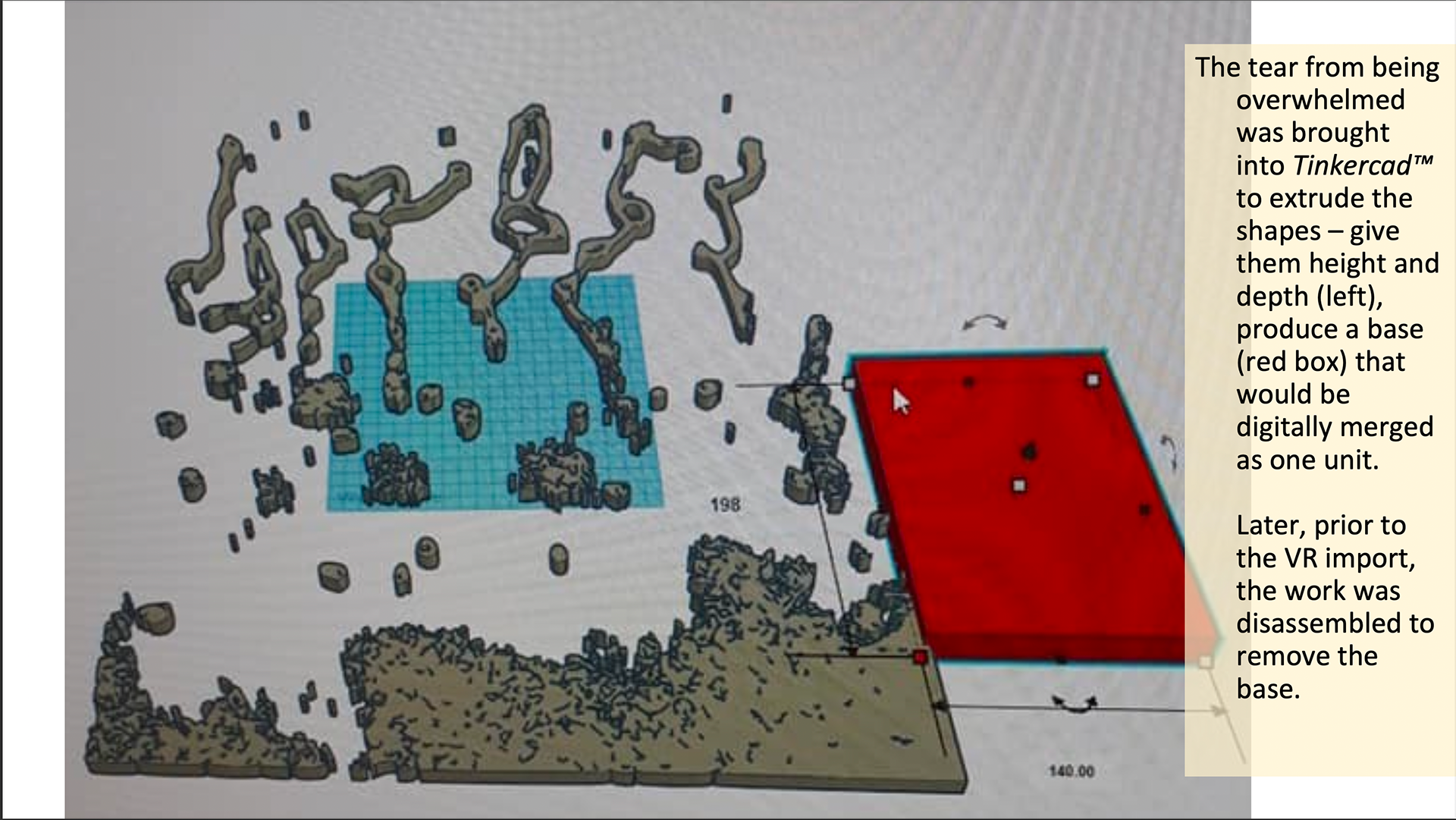
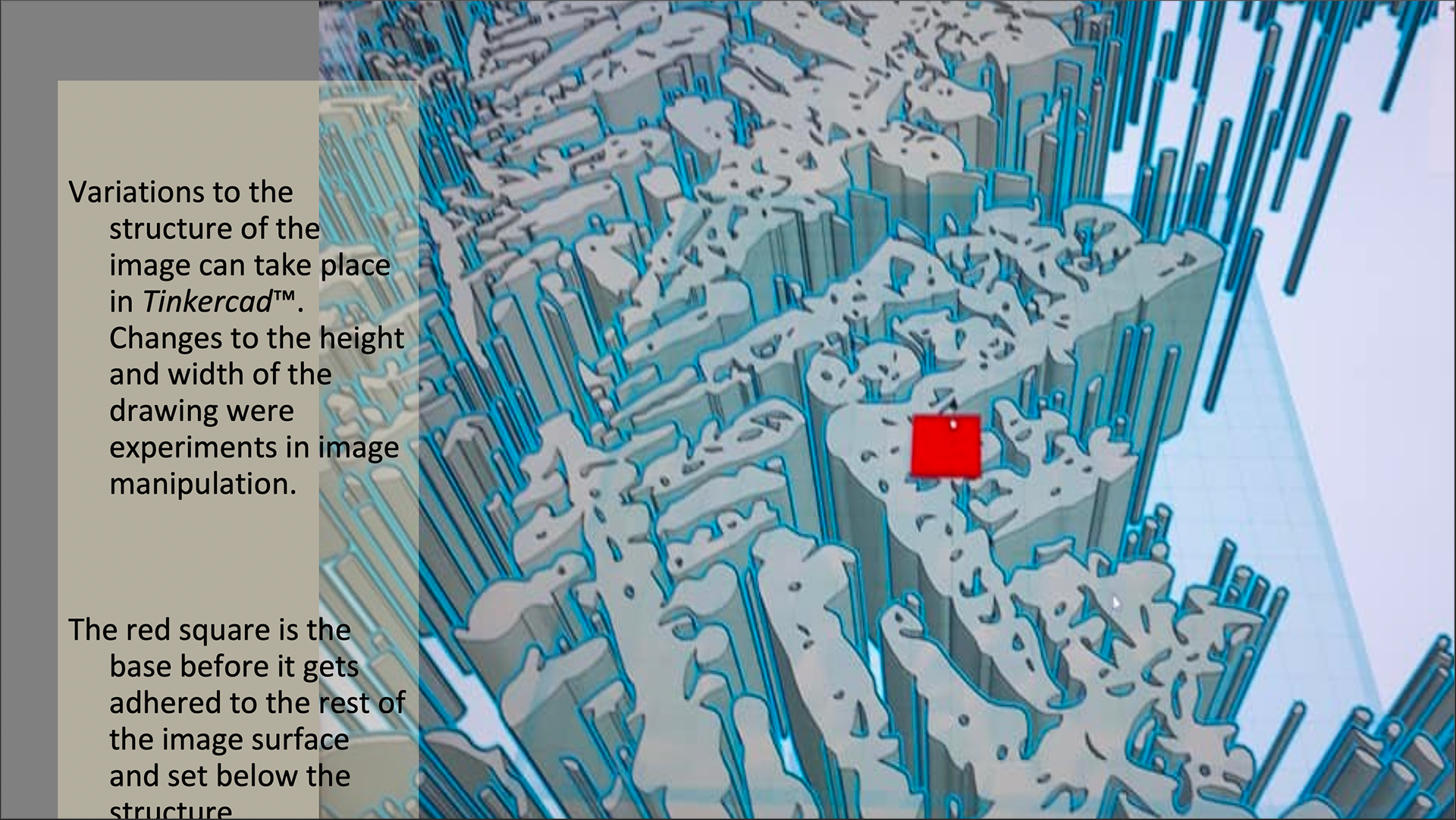
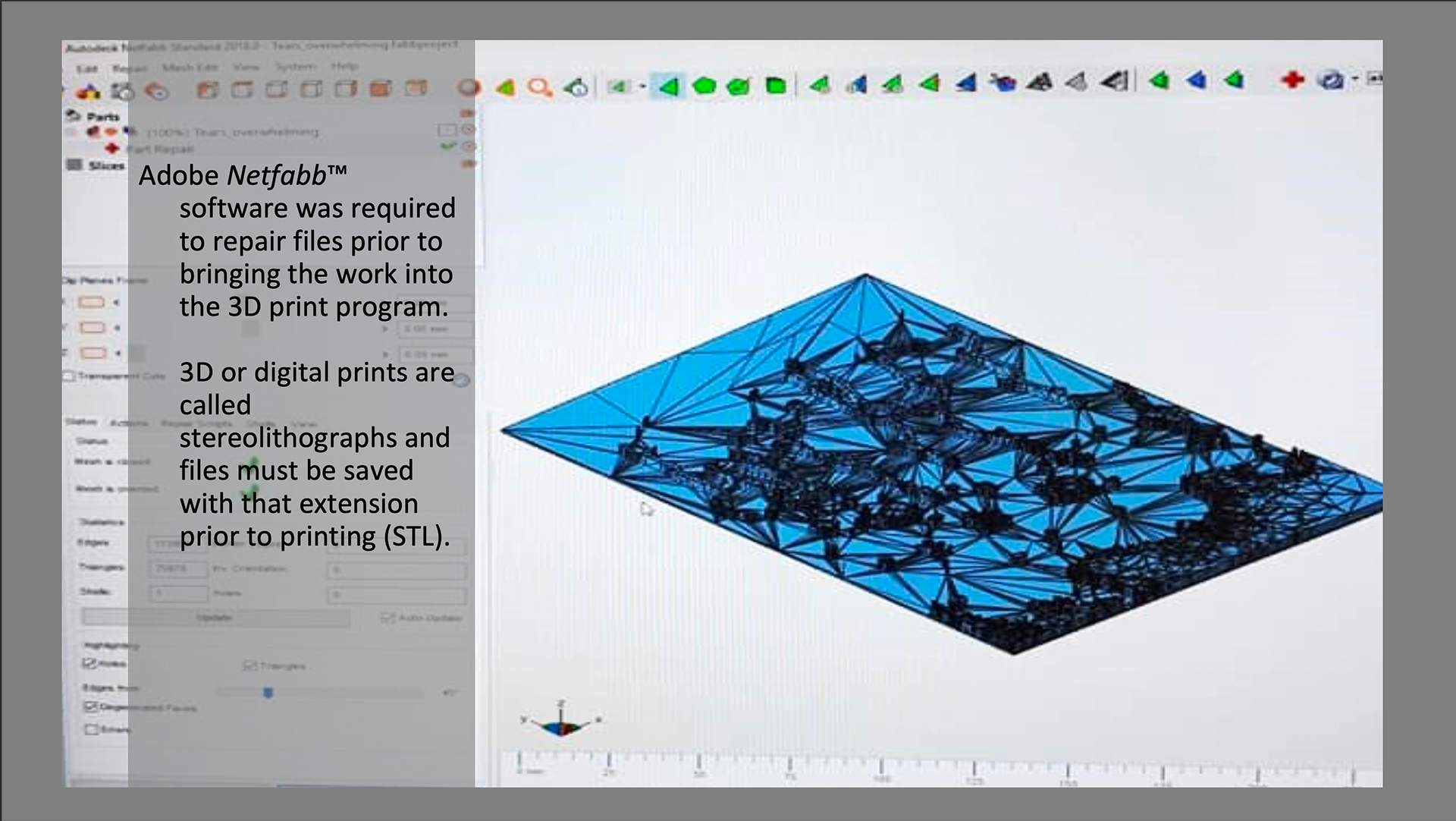
The 3D file was ‘sliced’ or readied for the Prussa 3D printer, a rapid prototyping machine.
The file was converted to a g-code, a numerical device to instruct the machine how to render the 3-dimensional imagery as stereolithograph.
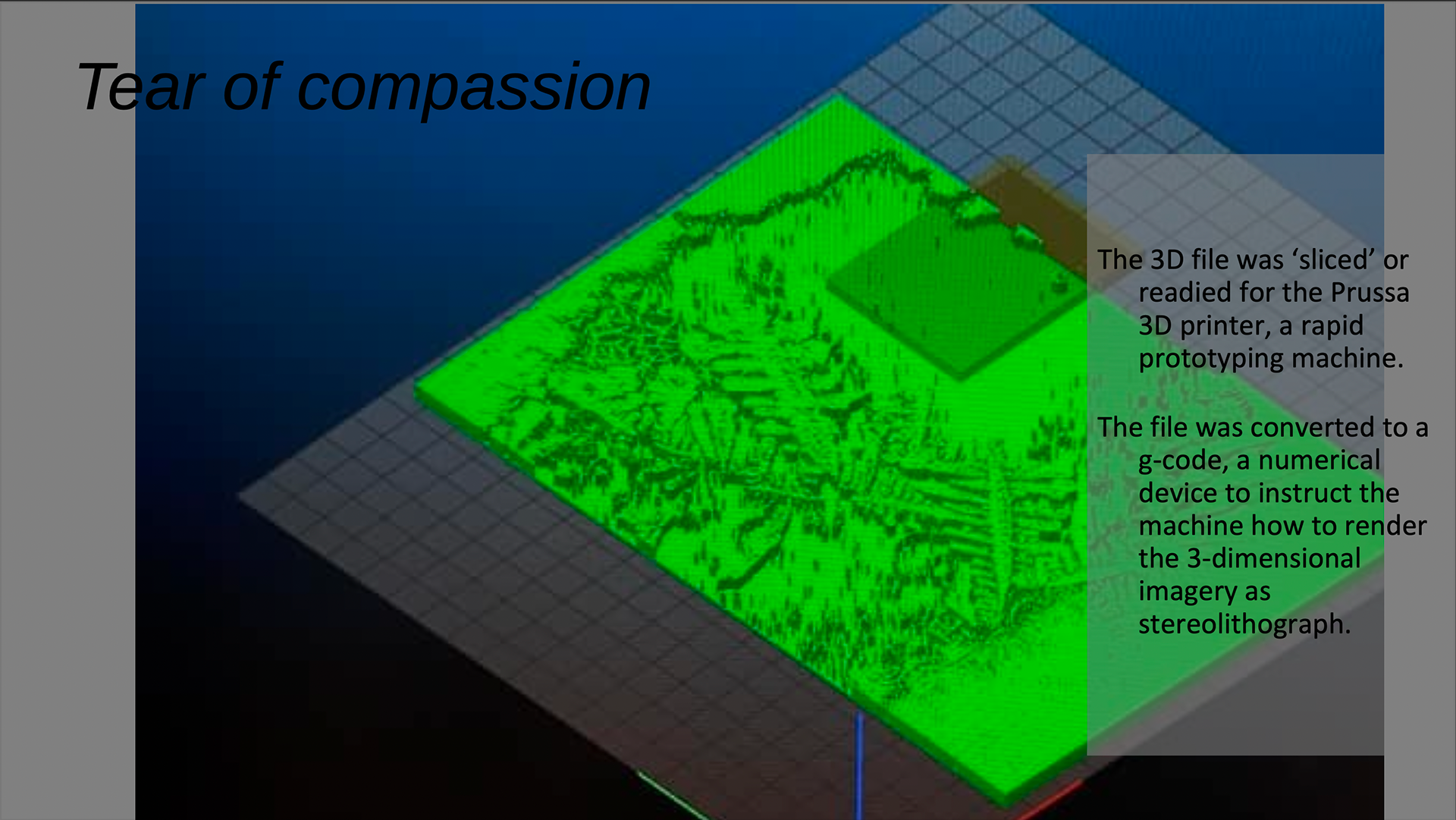
Tears is a multidimensional, intermedia project by
Debora Alanna.
Debora Alanna.
